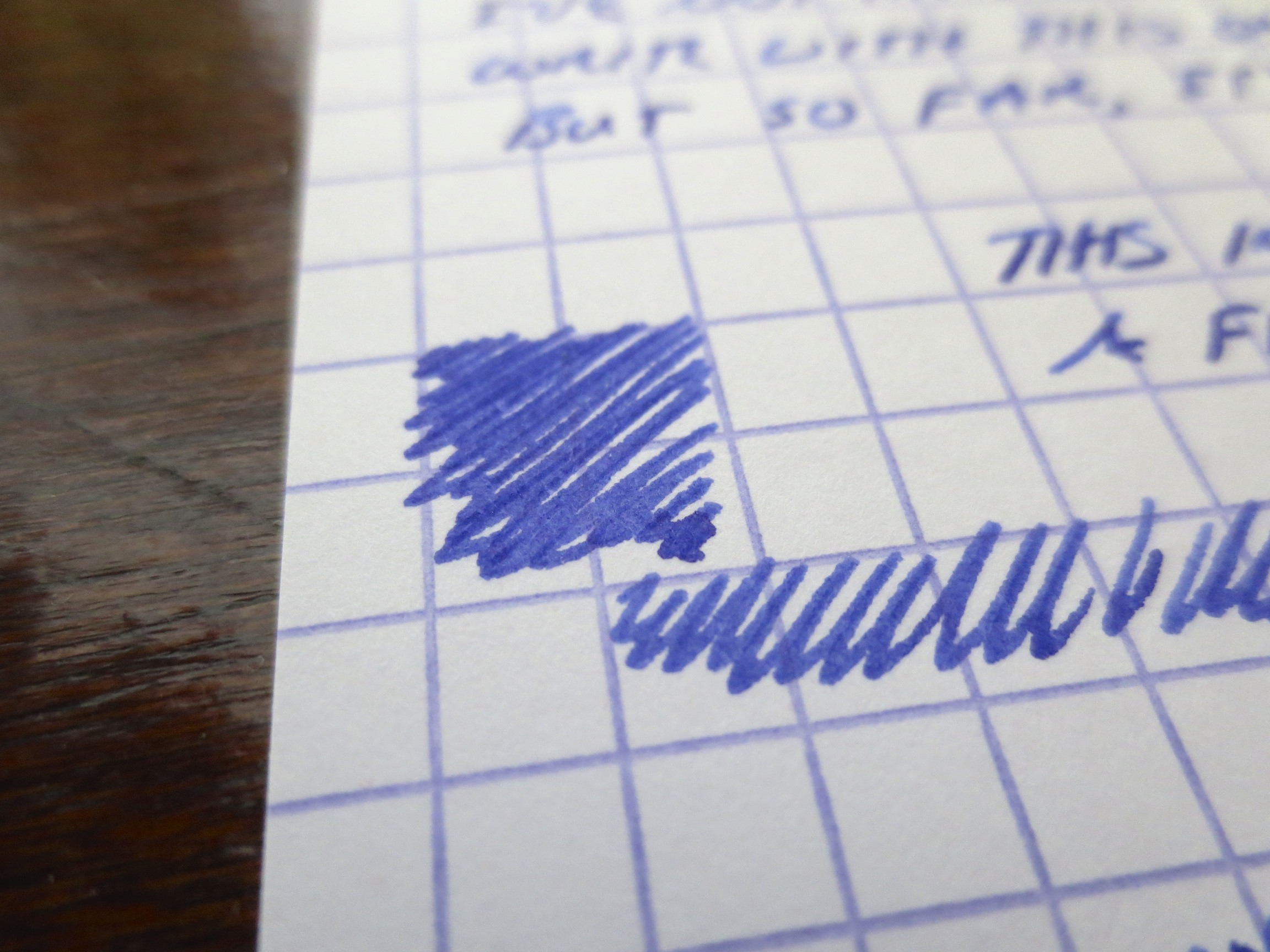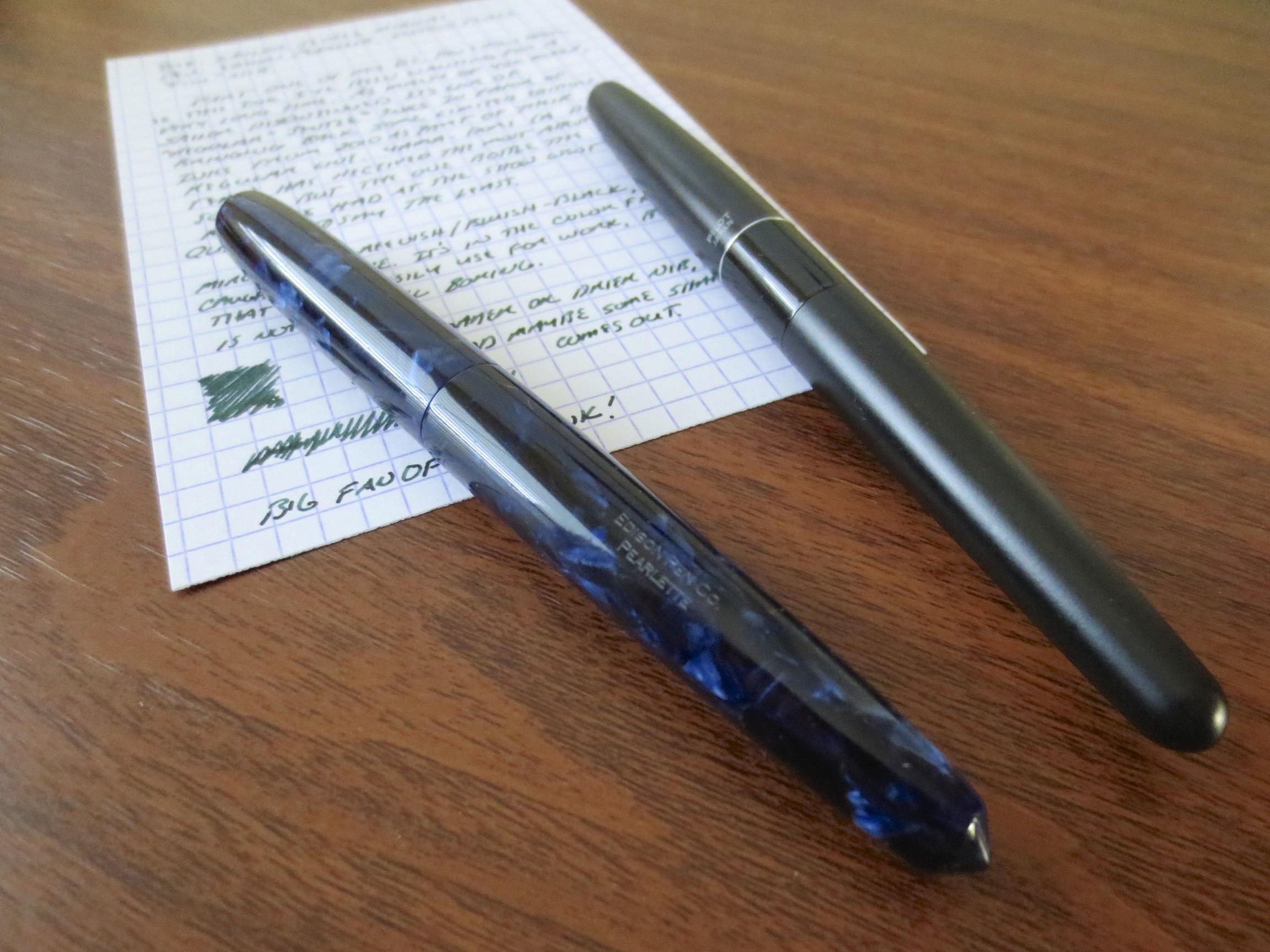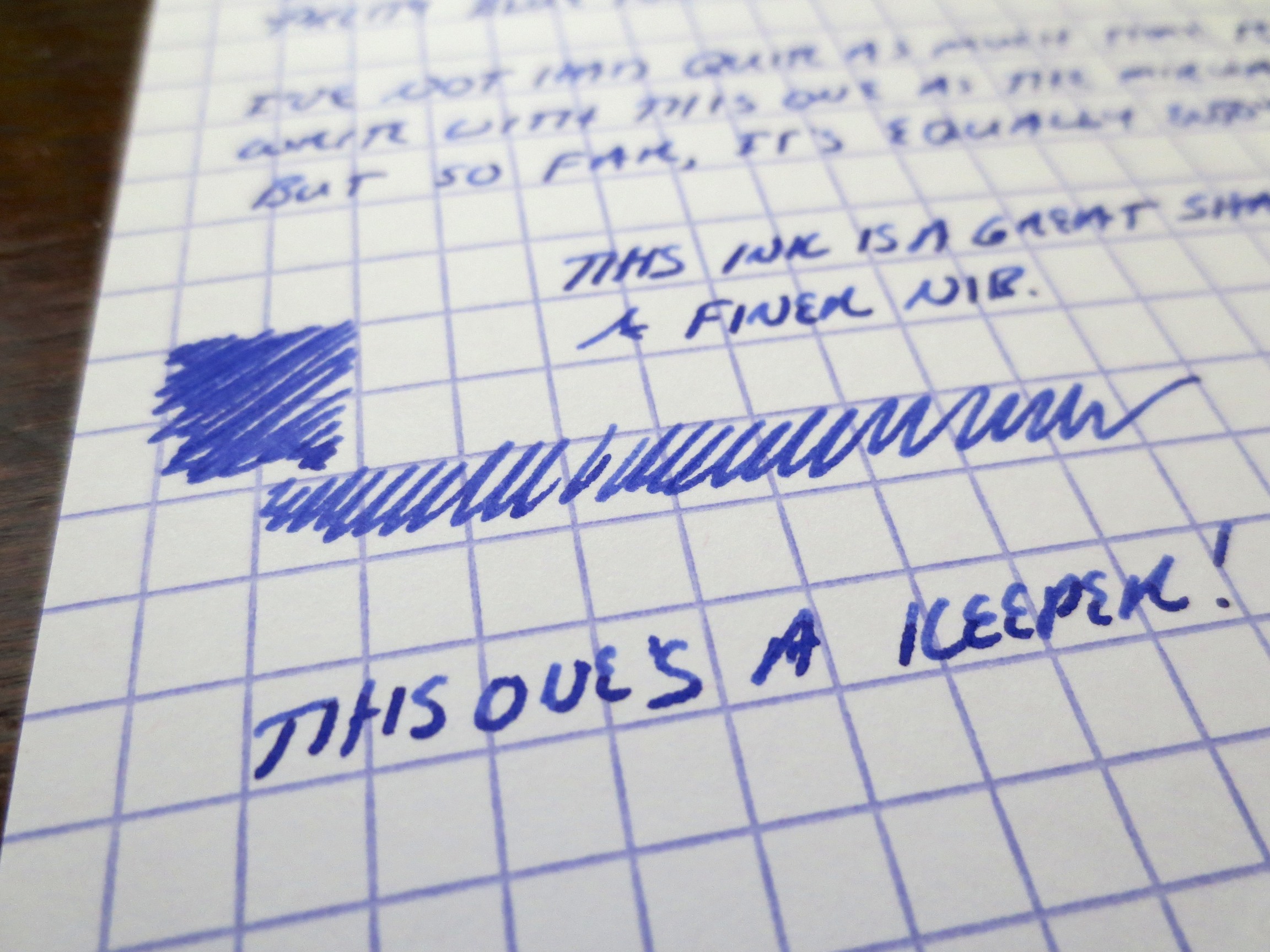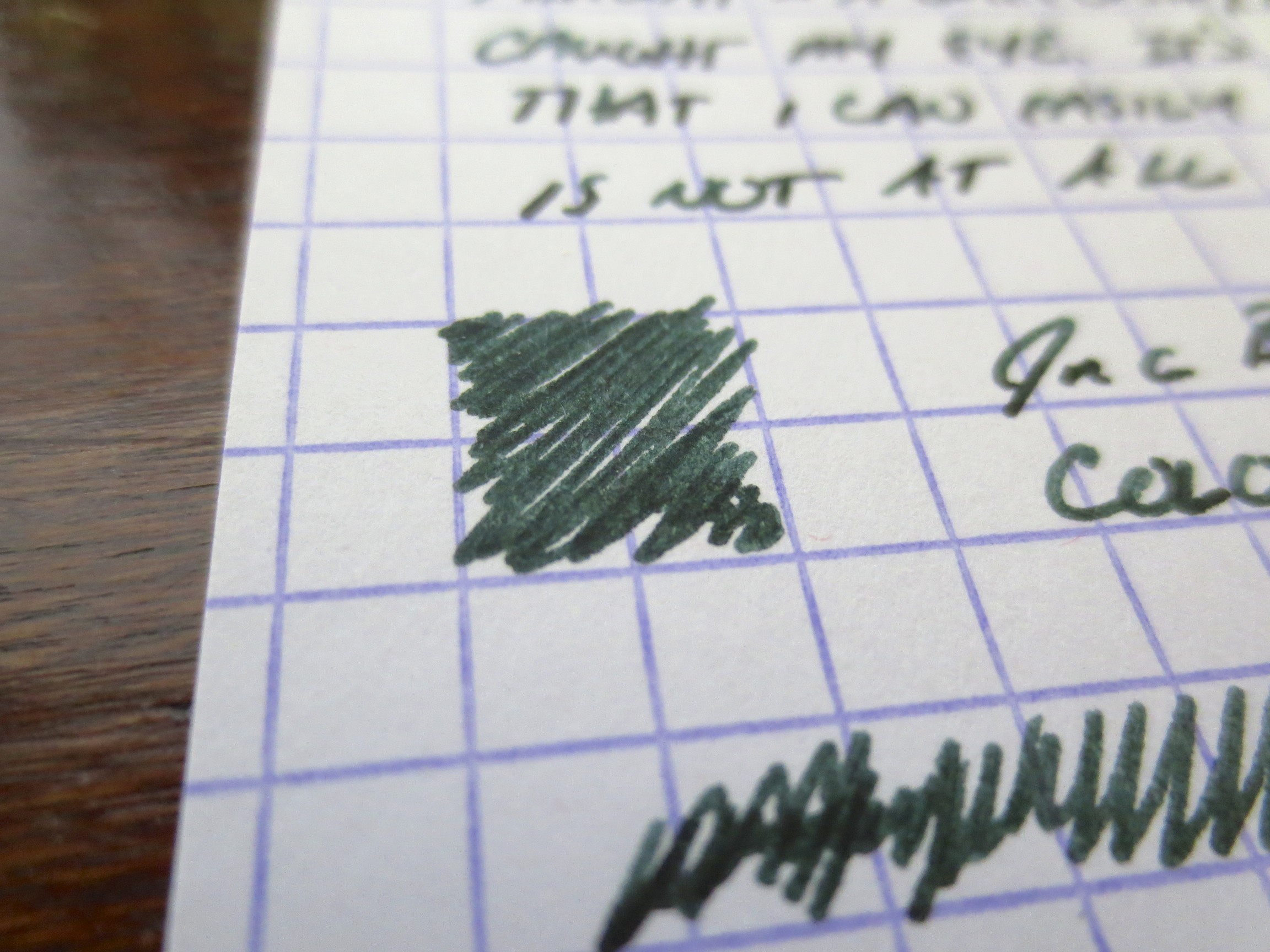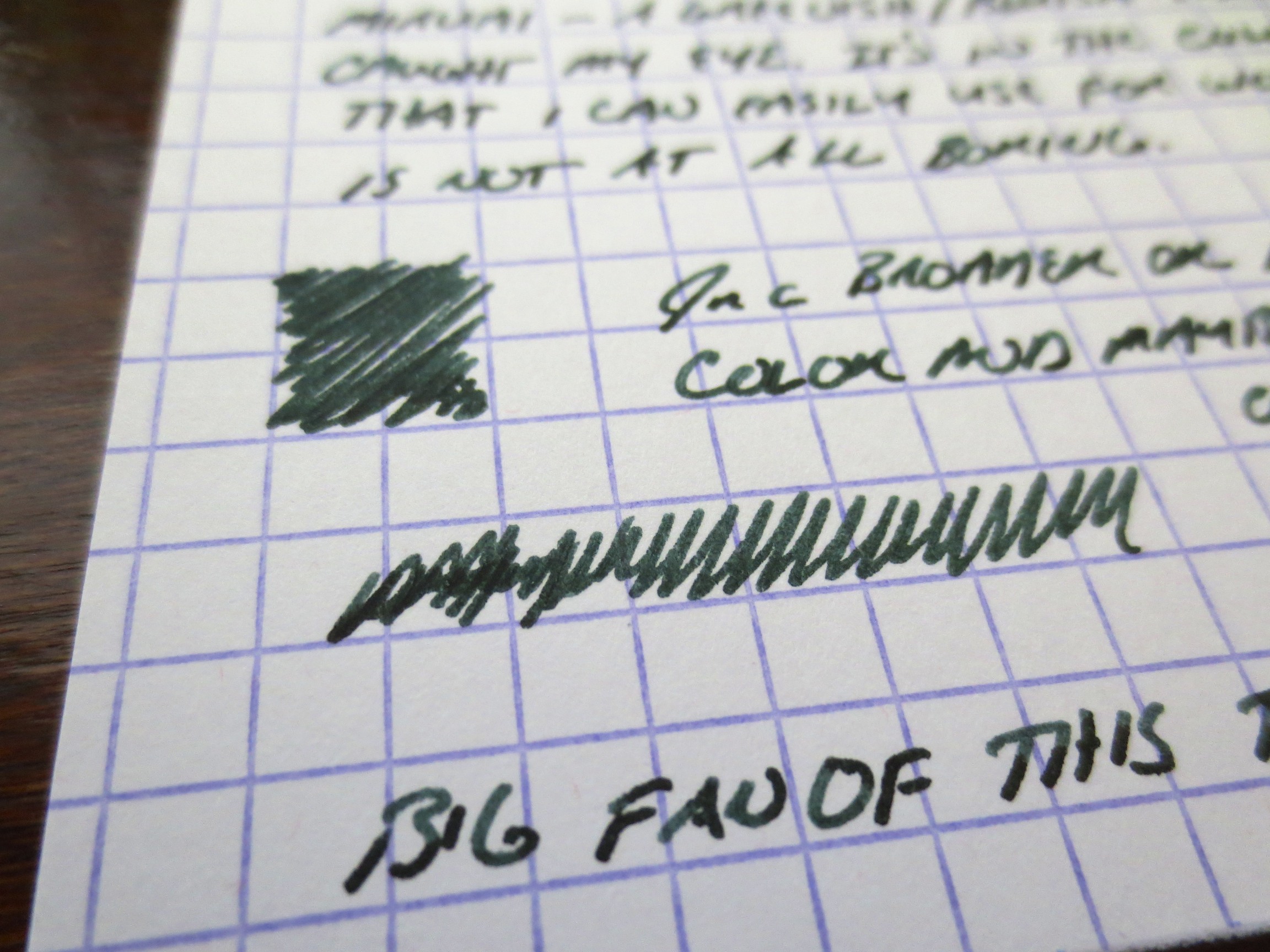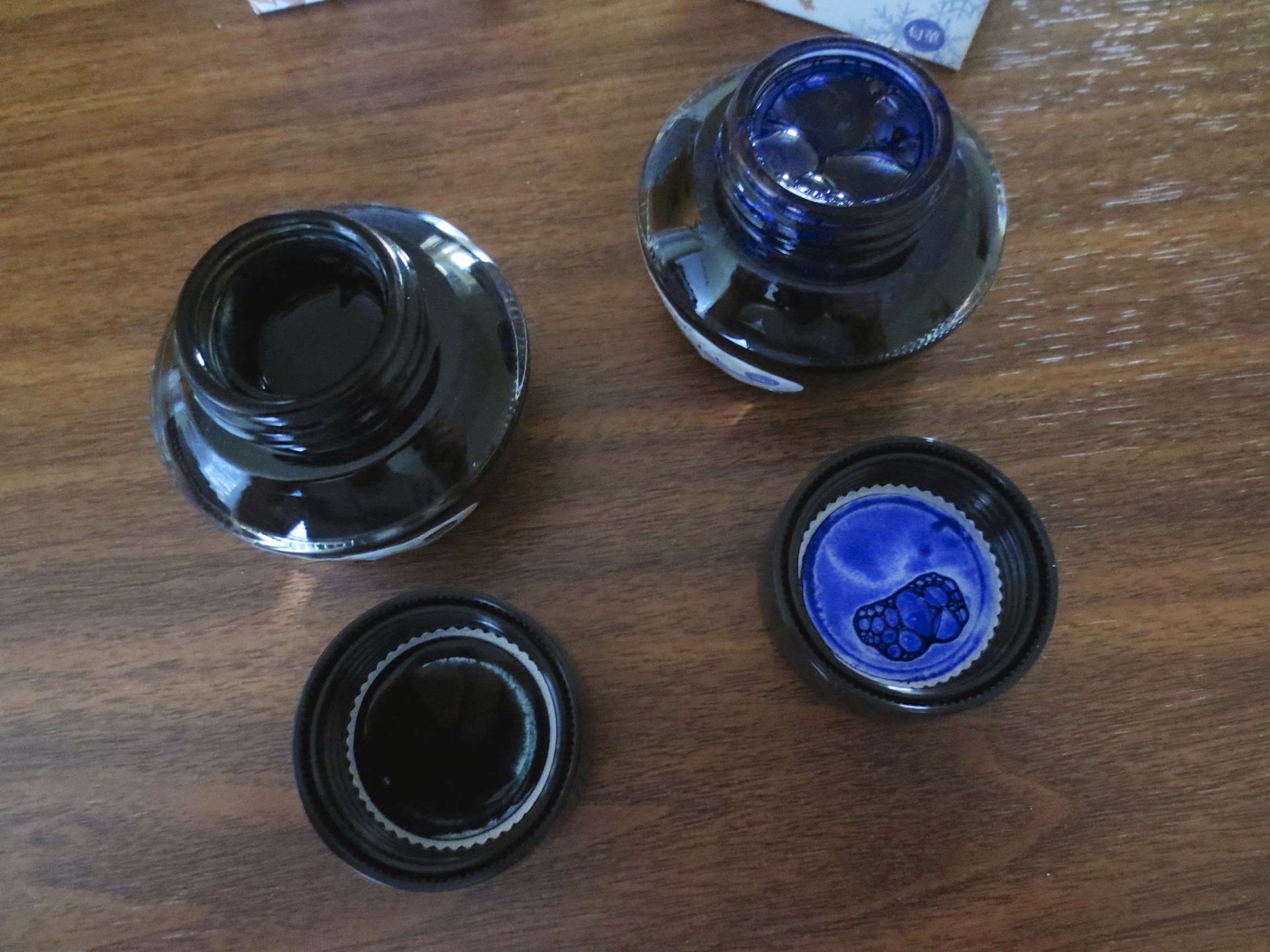Today I'm going to try something new: In an effort to get these new Sailor Inks reviewed and posted ASAP, I'm going to review them two at a time. Generally, I keep about six fountain pens inked up at any given time, but carry two with me on any given day. One is filled with a dark ink for notes, signing documents, etc. The other is filled with a brighter ink that I use for marking stuff up, and is typically a red, orange or purple. The past two days I've been using this pair. Miruai is a deep blue/green-black ink, and apparently translates as "Seaweed." Nioi-Sumire is a bright blue-violet ("Sweet Violet"), but to me leans more towards the blue end of the spectrum. I think both are gorgeous. Thank you Anderson Pens!
Sailor kept the same bottle with the internal inkwell. I personally like the Sailor bottle, although some complain that the inkwell makes it difficult to flil pens with larger nibs.
This gives you an idea of how dark Miruai is. The ink is probably a bit blacker than Epinard, but I have not done a side-by-side comparison. Miruai has more blue in the color.
Nioi-Sumire, to me at least, is far more blue than purple. If you are looking for a very purple ink, try Shigure (review forthcoming).
I've enjoyed working with both of these inks. They share the same great properties with the rest of Sailor's Jentle line. As you may have heard, Sailor discontinued its "regular" line of inks earlier this year, and resurrected several "limited edition" inks from 2010 to replace them. Because of the somewhat unique range of colors and the fact that these inks were so well-behaved (meaning they clean easy, dry quickly, and don't crust up on nibs), people were up in arms. Rest easy, folks. While Apricot, Epinard, Sky High, etc. may be gone (at least until Sailor brings them back as "limited editions" at a higher price point, as some have speculated), we have an entirely new line of great colors to play with.
Both of these inks are moderately saturated, and a touch dry, but I had no flow issues with either. I have the Nioi-Sumire in a Pilot Metropolitan with a medium nib, and the Miruai in a brand-spankin'-new Edison Pearlette in deep indigo flake acrylic (fine nib) which I absolutely love. Card stock is Exacompta, and the scanner is a Doxie Flip. Here are the results:
Scan of Nioi-Sumire. This is a fairly accurate representation of what the color looks like when the ink is dry. I've also included some photographs in the gallery below to show some of the shading.
This scan captured the blue-green edge to the Miruai pretty well. In a very fine nib, the ink can appear almost black. In this Edison Pearlette "fine," which runs wider than the typical fine nib, you get some shading and a touch of sheen.
